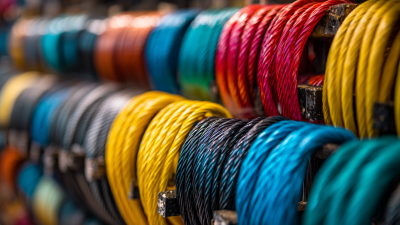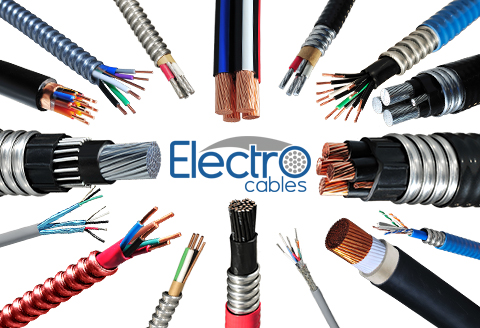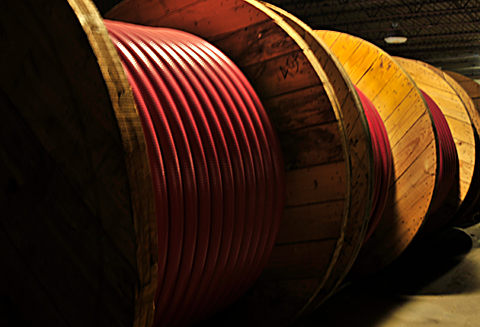A partner you can trust
How to Select the Right Cable Wire Connectors for Your Project Needs
Selecting the right cable wire connectors for your project needs is crucial for ensuring optimal performance and reliability in electrical systems. According to a report by MarketsandMarkets, the global wire and cable connectors market is projected to reach USD 123.3 billion by 2026, driven by increasing demand for energy-efficient solutions and advancements in technology.

With an array of options available, including terminal blocks, plugs, and sockets, it is essential to consider factors such as voltage rating, current capacity, and environmental resistance when making your selection. Moreover, improper connector choices can lead to issues such as signal degradation and safety hazards, emphasizing the importance of thorough research and understanding of project requirements.
By comprehensively evaluating these elements, you can ensure that the cable wire connectors you choose will meet both immediate project needs and long-term operational reliability.
Understanding Different Types of Cable Wire Connectors Available in the Market
When selecting the right cable wire connectors for your project needs, understanding the various types available in the market is crucial. The market offers a wide array of connectors, including standard options such as plug connectors, socket connectors, and specialized varieties like terminal blocks and splicing connectors. Each type serves a different purpose, and the choice largely depends on the specific requirements of your project, such as the electrical load, environmental conditions, and installation constraints.
In addition to traditional connectors, the industry has seen advancements in connectivity solutions, accommodating the rise in demand from sectors like renewable energy and smart home technology. For instance, innovations in photovoltaic connectors allow for efficient and safe cable terminations in solar installations. The increasing emphasis on durable and reliable connections has led to a market projection estimating significant growth in the wires and cables sector, further highlighting the importance of selecting the appropriate connectors tailored to project specifications.
Evaluating the Electrical Specifications for Your Project Requirements
When selecting cable wire connectors for your project, evaluating the electrical specifications is crucial to ensure compatibility and safety. First, consider the voltage and current ratings of the connectors, as they should match or exceed the requirements of your application. For example, connectors rated for higher voltages may be necessary for projects involving industrial machinery, while low-voltage requirements might suffice for simple household wiring. It’s essential to consult the manufacturer’s specifications to avoid potential hazards such as overheating or equipment failure.
Additionally, pay attention to the insulation type and environmental ratings of the connectors. Depending on your project's location—whether it’s indoors, outdoors, or in extreme conditions—you may need connectors with specific insulation materials that offer resistance to moisture, heat, or chemicals. Furthermore, understanding the connector's mechanical properties—such as its durability and tensile strength—can help ensure long-lasting performance in demanding environments. Thus, thoroughly assessing these electrical specifications will facilitate the selection of appropriate cable wire connectors tailored to your project's needs.
Evaluation of Cable Wire Connectors Electrical Specifications
Assessing Environmental Conditions and Application Suitability
When selecting cable wire connectors, one of the most critical factors to consider is the environmental conditions in which they will operate. Temperature fluctuations, humidity levels, and exposure to elements like dust, water, or chemicals can significantly affect the performance and longevity of connectors. For instance, in outdoor applications, connectors must be weatherproof and resistant to UV light, while those used in harsh industrial settings might require connectors that can withstand corrosive substances. Understanding the specific environmental challenges can guide you in choosing connectors that will endure.

Another vital aspect is the suitability of the connectors for your specific application. Different projects have unique requirements, such as the need for high bandwidth, data transfer reliability, or electrical load capacity. For example, connectors used in high-frequency data transmissions may require shielding to minimize interference, while power connectors must be rated for the appropriate current and voltage levels. Evaluating these characteristics in conjunction with environmental factors will help you select the right connectors that ensure optimal performance and durability in your project.
Determining Compatibility with Existing Wiring and Components
When selecting cable wire connectors for your project, determining their compatibility with existing wiring and components is crucial. According to recent industry reports, approximately 30% of electrical failures arise from improper connections, emphasizing the need for systematic evaluations. Checking the gauge of your existing wiring is a vital first step; connectors must match the wire size to ensure optimal conductivity and to prevent overheating. In the United States, wire sizing is based on the American Wire Gauge (AWG) system, which provides a standardized method to assess compatibility.

Furthermore, the environmental conditions in which your connectors will operate can significantly impact durability and safety. For example, connectors used in outdoor environments require specific ratings such as IP68 for water and dust resistance. Recent findings suggest that connectors with a higher sealing rating can reduce failure rates by up to 40% in harsh conditions. By carefully assessing these factors, you can select connectors that not only fit technically but also enhance the longevity and reliability of your electrical systems.
Tips for Installation and Maintenance of Cable Wire Connectors
When it comes to selecting the right cable wire connectors for your project needs, proper installation and maintenance are crucial to ensure safety and functionality. According to a report by the International Electrotechnical Commission (IEC), improper connections can lead to a staggering 30% of electrical failures in industrial systems, highlighting the importance of careful installation practices.
**Tips for Installation:**
1. Before you begin, ensure that you identify the specific requirements of your project, including voltage ratings and the type of cable used. Properly matching connectors to cable specifications can prevent issues such as overheating and electrical shorts.
2. Use appropriate tools to strip wire insulation and avoid any damage to the conductors. A wire stripper that suits the cable gauge promotes a cleaner connection, which is vital for maintaining conductivity.
**Tips for Maintenance:**
Regular inspection of cable connectors is essential. The National Fire Protection Association (NFPA) suggests scheduling maintenance checks at least once a year, focusing on signs of wear or corrosion. Clean connectors regularly with a safe cleaning solution to prevent buildup that could impair performance. Additionally, consider using dielectric grease to protect connections from moisture and corrosion, ensuring longevity and reliability in your connections.
How to Select the Right Cable Wire Connectors for Your Project Needs
| Connector Type | Suitable Applications | Wire Gauge Compatibility | Installation Tips | Maintenance Tips |
|---|---|---|---|---|
| Ring Terminal | High-current wiring, automotive | 10 AWG - 2 AWG | Ensure proper torque on bolts | Check for corrosion annually |
| Spade Connector | Home appliances, electronics | 14 AWG - 10 AWG | Use heat shrink for insulation | Inspect for loose connections |
| Butt Connector | Wire joins in marine applications | 16 AWG - 12 AWG | Crimp ends firmly, use crimping tool | Check for frayed wires regularly |
| Bullet Connector | General automotive wiring | 18 AWG - 14 AWG | Align connectors before mating | Maintain a clean connection area |
| Heat Shrink Connector | Waterproof connections | 20 AWG - 10 AWG | Use heat gun for sealing | Inspect and replace if damaged |
Related Posts
-

10 Essential Tips for Sourcing Electric Cables Effectively in 2023
-

Top Strategies for Sourcing Shielded Power Cable in Global Markets
-

Comprehensive Guide to Selecting the Best Flexible Cable Conduit for Your Project
-

How to Choose the Right Wire and Cable for Your Electrical Projects
-

Understanding the Benefits of Using Flexible Cable Conduit in Your Projects
-

How to Choose the Right Electric Cable for Your Global Procurement Needs

Products
Products
LEARN MORE
Current Inventory
Current Inventory
LEARN MORE
Custom Solutions
Custom Solutions
WE CAN HELPLighting Power & Control-Signal Cable
This content is restricted to site members. If you are an existing user, please log in. New users may register … LEARN MORE “Lighting Power & Control-Signal Cable”
LOOKING
FOR HELP?
We are here to help. You can contact us or create an account online to have access to special products, technical specifications and our new online quote tool.
ELECTRO CABLES
9 Riverside Drive
P.O. Box 276
Trenton, Ontario
CANADA K8V 5R5
N.A. Toll Free: 888-ELECTRO
(1-888-353-2876)
World: 613-394-4896
Fax: 613-394-4101
Email: sale@machinecables.com
We manufacture cables that are certified by the Canadian Standards Association (CSA), listed by Underwriters Laboratories and/or listed by Intertek (ETL).
Our quality management system is registered to ISO 9001: 2015. Our team is dedicated to consistently providing quality service and products to our customers.

© 2025 ELECTRO CABLES • SITE BY SNAP 360•
